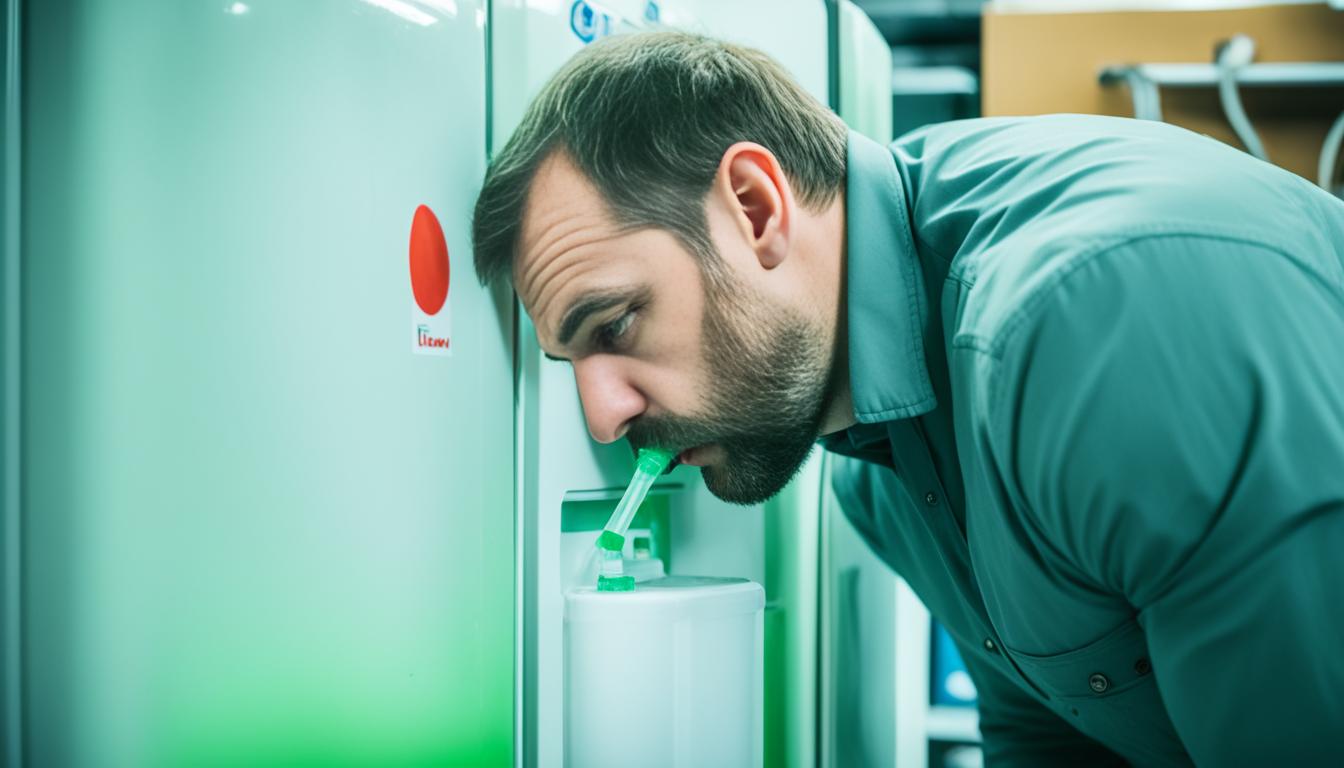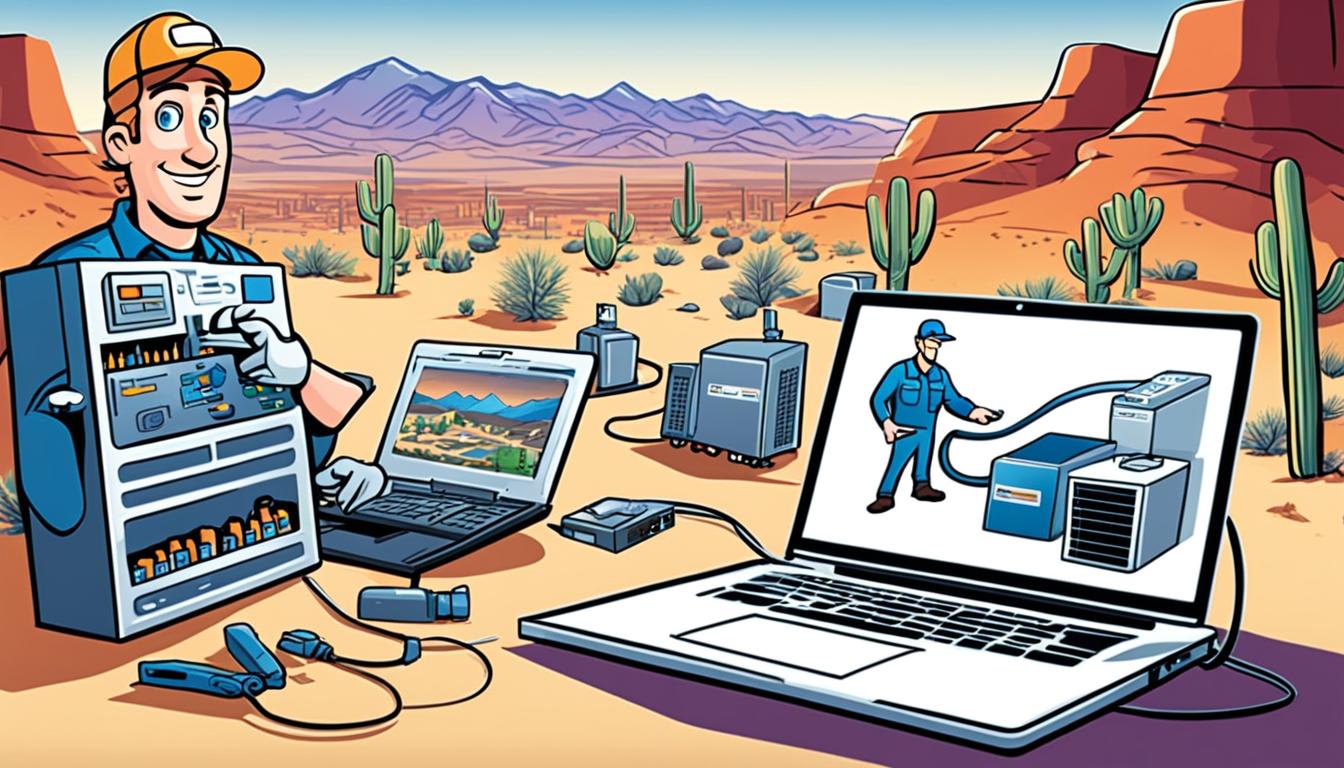Imagine this. It’s a sweltering summer day, and the blistering heat threatens to suffocate you. Seeking refuge, you step into the cool oasis of your home, expecting refreshing air to greet you. But little do you know, lurking within your HVAC system, there may be a silent danger – a refrigerant leak.
Refrigerant leaks may seem inconsequential at first, but they carry significant safety risks that can impact your health and the environment. The consequences of these leaks can be dire, causing not only physical discomfort but also long-term health complications.
As a concerned homeowner, you deserve to know the truth about refrigerant leaks, their hazards, and how you can safeguard yourself and your loved ones. Let’s delve deeper into this issue and explore the measures you can take to prevent and address refrigerant leaks.
Key Takeaways:
- Refrigerant leaks can have severe health effects, including headaches, dizziness, and respiratory diseases.
- Leaking refrigerants contribute to ozone depletion, increasing the risk of skin cancer and other diseases.
- Scheduling regular maintenance check-ups, ensuring proper installation, and handling leaks promptly are crucial in preventing refrigerant leaks.
- Detect refrigerant leaks by inspecting for strange sounds, insufficient cooling, and frozen evaporator coils.
- Upgrading to newer systems and adopting flammable refrigerants can help mitigate the environmental impact of refrigerant leaks.
Health and Environmental Dangers of Refrigerant Leaks
Refrigerant leaks pose significant health dangers and environmental risks that need to be addressed promptly. The chemicals used in cooling appliances can have severe effects on human health, leading to various complications and illnesses.
Health Dangers of Refrigerant Leaks:
- Refrigerant Poisoning: Inhaling refrigerant fumes can be extremely dangerous and even fatal. Some common symptoms of refrigerant poisoning include headaches, dizziness, nausea, confusion, and loss of consciousness. Immediate medical attention is crucial in such cases.
- Skin Irritation: Refrigerant leaks can cause skin irritation and allergic reactions. Direct contact with leaking refrigerants should be avoided to prevent skin discomfort and potential complications.
- Respiratory Diseases: Inhalation of refrigerant fumes can lead to respiratory issues, such as asthma and other respiratory diseases. Prolonged exposure to these fumes can exacerbate existing respiratory conditions or lead to the development of new ones.
Environmental Dangers of Refrigerant Leaks:
- Ozone Depletion: Refrigerant leaks contribute to ozone depletion. Ozone depletion exposes us to higher levels of harmful ultraviolet (UV) radiation, increasing the risks of skin cancer, cataracts, and other diseases related to UV exposure.
It’s essential to prioritize the detection and prevention of refrigerant leaks to minimize these health and environmental dangers. Regular maintenance check-ups and inspections by HVAC professionals can help in identifying and rectifying leaks at an early stage.
Some common signs of refrigerant leaks, which homeowners and HVAC repair contractors should be aware of, include strange noises, insufficient cooling, and frozen evaporator coils. Prompt action can prevent further risks.
| Refrigerant Leak Detection Methods | Refrigerant Leak Prevention |
|---|---|
| Regular maintenance and inspections | Proper installation by certified professionals |
| Inspecting for strange sounds and odors | Upgrading to newer, more efficient systems |
| Checking for frozen evaporator coils | Handling leaks promptly and professionally |
By adopting these preventive measures and taking immediate action in case of suspected leaks, we can safeguard our health and protect the environment from the hazards associated with refrigerant leaks.
The Rise of Flammable Refrigerants as Sustainable Alternatives
Flammable refrigerants are gaining momentum as more environmentally friendly options compared to traditional refrigerants. These alternatives offer several advantages such as higher energy efficiency, lower global warming potential, cost-effectiveness, and improved safety features. With a focus on sustainability, the adoption of flammable refrigerants is steadily increasing.
Europe is at the forefront of this shift, implementing regulations that encourage the use of flammable refrigerants. The mobile air conditioning sector, in particular, is transitioning from hydrofluorocarbons (HFCs) to hydrocarbon refrigerants due to their superior environmental performance. Additionally, countries like Australia and New Zealand actively pursue the use of hydrocarbon refrigerants as an alternative.
However, it is crucial to note that the use of flammable refrigerants requires strict safety measures due to their higher flammability. Proper installation, adherence to fire safety requirements, technician training, and ongoing research and development for leak detection technologies and enhanced equipment design are essential elements in managing their inherent risks. By striking a balance between safety measures and the environmental benefits they offer, flammable refrigerants can be effectively utilized in various industries.





0 Comments